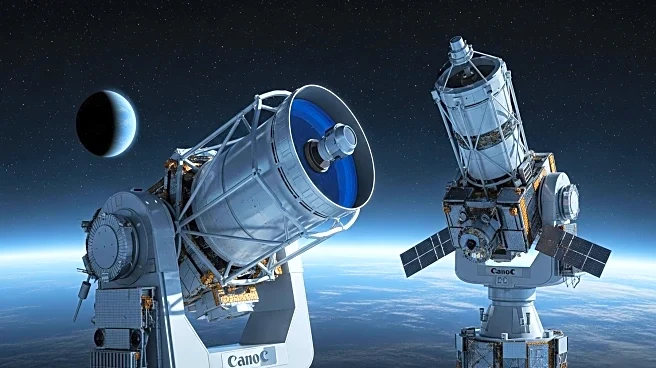What is the story about?
What's Happening?
Researchers at the University of Bristol have discovered unusual behavior in Titan's atmosphere using data from the Cassini-Huygens mission. Titan's dense, hazy atmosphere does not rotate in sync with its surface but oscillates like a gyroscope, shifting with the seasons. This behavior suggests a past event may have knocked the atmosphere off its spin axis. The discovery is crucial for NASA's upcoming Dragonfly mission, which will explore Titan's atmosphere and surface in the 2030s.
Why It's Important?
Understanding Titan's atmospheric dynamics is vital for future missions, particularly the Dragonfly mission, which will rely on atmospheric conditions for landing. The findings contribute to broader planetary science, offering insights into atmospheric physics that could apply to Earth. The research highlights the ongoing value of data from the Cassini mission, demonstrating the potential for new discoveries even after the mission's conclusion.
What's Next?
NASA's Dragonfly mission is scheduled to arrive at Titan in the 2030s, and the new atmospheric data will be crucial for planning its descent and operations. Researchers will continue to analyze Cassini data to uncover more about Titan's unique climate systems. The study opens new avenues for understanding atmospheric behavior on other celestial bodies, potentially influencing future exploration strategies.
Beyond the Headlines
Titan's atmospheric behavior challenges existing models of planetary atmospheres, prompting a reevaluation of how such systems stabilize and evolve. The discovery may lead to new theories about atmospheric dynamics and their implications for habitability and climate on other planets.
AI Generated Content
Do you find this article useful?













